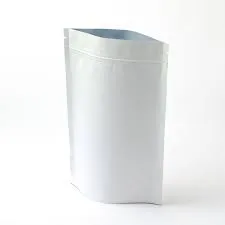- Afrikaans
- Albanian
- Amharic
- Arabic
- Armenian
- Azerbaijani
- Basque
- Belarusian
- Bengali
- Bosnian
- Bulgarian
- Catalan
- Cebuano
- chinese_simplified
- chinese_traditional
- Corsican
- Croatian
- Czech
- Danish
- Dutch
- English
- Esperanto
- Estonian
- Finnish
- French
- Frisian
- Galician
- Georgian
- German
- Greek
- Gujarati
- haitian_creole
- hausa
- hawaiian
- Hebrew
- Hindi
- Miao
- Hungarian
- Icelandic
- igbo
- Indonesian
- irish
- Italian
- Japanese
- Javanese
- Kannada
- kazakh
- Khmer
- Rwandese
- Korean
- Kurdish
- Kyrgyz
- Lao
- Latin
- Latvian
- Lithuanian
- Luxembourgish
- Macedonian
- Malgashi
- Malay
- Malayalam
- Maltese
- Maori
- Marathi
- Mongolian
- Myanmar
- Nepali
- Norwegian
- Norwegian
- Occitan
- Pashto
- Persian
- Polish
- Portuguese
- Punjabi
- Romanian
- Russian
- Samoan
- scottish-gaelic
- Serbian
- Sesotho
- Shona
- Sindhi
- Sinhala
- Slovak
- Slovenian
- Somali
- Spanish
- Sundanese
- Swahili
- Swedish
- Tagalog
- Tajik
- Tamil
- Tatar
- Telugu
- Thai
- Turkish
- Turkmen
- Ukrainian
- Urdu
- Uighur
- Uzbek
- Vietnamese
- Welsh
- Bantu
- Yiddish
- Yoruba
- Zulu
Printing Solutions for Cardboard Materials and Innovative Designs
The Art of Print on Cardboard Unleashing Creativity and Sustainability
In today's fast-paced and environmentally conscious world, the significance of innovative printing methods cannot be overstated. Among these methods, printing on cardboard has emerged as a popular choice for artists, designers, and businesses alike. It combines creativity with practicality while also addressing sustainability concerns. This article explores the intricacies of printing on cardboard, its advantages, and its transformative impact on various industries.
Understanding Cardboard as a Medium
Cardboard, often perceived as a utilitarian material, has a unique texture and structure that lends itself beautifully to print. Composed of recycled materials, it is an eco-friendly choice that appeals to both businesses and artistic endeavors. The versatility of cardboard ranges from corrugated packaging to flat sheets, allowing for a wide range of applications. When printed upon, cardboard can showcase vibrant colors and intricate designs, making it a favorite among artists looking for innovative ways to express their creativity.
Techniques of Printing on Cardboard
Various printing techniques can be used on cardboard, each offering distinct benefits
.1. Digital Printing This method has gained immense popularity due to its efficiency and ability to produce high-quality prints. Digital printers can handle complex designs and vivid colors, making it a prime choice for businesses aiming to create eye-catching packaging or promotional materials. Additionally, digital printing allows for smaller runs, enabling bespoke products that cater to niche markets.
2. Screen Printing Known for its durability, screen printing is frequently used for designs that require high opacity and bold colors. This technique involves creating a stencil (the screen) and using it to apply layers of ink onto the cardboard. While it may have a longer setup time, the end result is often worth the wait, especially for larger runs where consistency is key.
3. Offset Printing This traditional method is renowned for producing high-quality prints at scale. By transferring an inked image from a plate to a rubber blanket and then to the cardboard, offset printing delivers sharp images and consistent colors. It is particularly ideal for bulk orders, making it a staple in the packaging industry.
print on cardboard

4. Flexography Often used for packaging materials, flexography is a relief printing technique that employs flexible plates. This method excels in printing on uneven surfaces and is particularly effective for high-speed production. Its adaptability makes it suitable for various cardboard types, from boxes to labels.
The Benefits of Printing on Cardboard
1. Sustainability As the world prioritizes sustainability, cardboard stands out as a renewable and recyclable material. By choosing to print on cardboard, businesses can reduce their carbon footprint while promoting a green image. Furthermore, consumers increasingly prefer eco-friendly packaging, making printed cardboard not just a choice of material but a strategic business decision.
2. Cost-Effectiveness Printing on cardboard is often more cost-effective than other materials. Cardboard is abundant and relatively cheap to produce compared to plastic or metal. This affordability allows businesses to experiment with their designs without incurring significant costs.
3. Versatile Applications From retail packaging to artistic creations, the applications of printed cardboard are endless. It is used in everything from product packaging and displays to unique art pieces and DIY projects. This versatility means that both businesses and individuals can find innovative uses for their printed cardboard.
4. Enhanced Branding Customized printed cardboard can serve as a powerful branding tool. Unique designs can help products stand out on the shelves, creating a memorable experience for consumers. Businesses can communicate their brand story through creative packaging, which enhances customer engagement and loyalty.
Conclusion
Printing on cardboard represents a harmonious blend of creativity, practicality, and sustainability. As industries continue to evolve, the importance of innovative printing methods will only grow. Whether used for packaging, marketing materials, or artistic endeavors, cardboard offers a canvas that is both eco-friendly and endlessly versatile. By embracing this medium, businesses and artists alike can not only unleash their creativity but also make a positive impact on the environment, paving the way for a more sustainable future.













